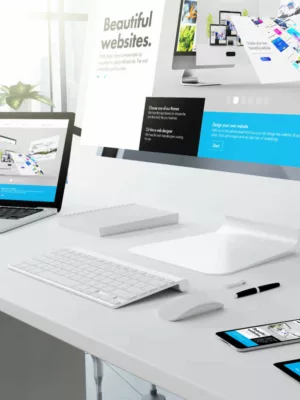
Organizations spend a lot of money on design to improve their products and services in today’s competitive environment. Because many of them are also increasing their spending on design, it’s expected that business leaders want to justify these costs. Unfortunately, many business owners fail to understand the value of design or speak the same language as designers. That leaves little room for them to effectively work together and keeps the design’s concrete benefits a mystery.
It may seem that design is not supposed to be measured in hard numbers. But let us show you how to merge both worlds - discuss design while speaking the language of business.
Do Businesses Need to Measure Design ROI?
Practically every business decision requires knowledge of ROI. Otherwise, the leadership will have no way of knowing whether the efforts will yield results. So, the short answer is yes - it’s essential to calculate design’s ROI before any changes are made.
But how do you know that a design change will pay off? When someone says the redesign will be/was a success, what does it really mean? From a designer’s point of view, the results may be evident. Looking at it from the business perspective, not so much.
Here are some of the ways you can look at a design value framework:
- How it affects purchase influence (emotional impact)
- How it enables strategy, helps to enter new markets
- How it builds brand image and corporate reputation
- How it improves time to market and the development process
- How it reduces costs
But here is an important thing about design ROI: you need to hypothesize it, which is what we’ll focus on next.
How to Quantify Design Work: Step-by-Step
Let’s now move on to creating hypotheses and interpreting the design’s impact through numbers (with just basic math). What’s more important, we’ll translate the calculated impact into strategic arguments that don’t revolve around complex metrics.
1. Set the Profitability Framework
Whatever the design team does, should serve the ultimate purpose of helping the company earn more than it spends. It can happen in two ways: through increasing revenue or decreasing costs (or both at the same time).
These two levers, or business measurements, can be further broken down into two. Let’s use a simple profit tree to illustrate this:
Increasing revenue:
- Attracting more customers (conversion, referrals, etc.)
- Increase customer value (increasing sales per customer, retaining customers longer, increasing customer lifetime value)
Decreasing costs:
- Decreasing fixed costs (lease, bills, labor, etc.)
- Decreasing variable costs (cost to serve, marketing, shipping, etc.)
2. Calculate Financial Impact
To estimate the impact, you need to establish the status quo and compare it to projected changes. For example, after choosing a set of key performance measurements, you’ll need to measure:
- Current state: How many resources are we spending per design component?
- Future impact: How much less are we going to spend (in percentages, dollars, hours, etc.)?
Some of the metrics you can use:
- Time and money per design component
- Satisfaction rating
- Frequency of return visits
- Feature usage
- New accounts or visitors
- Returning visitors
- Conversion rate
- Customer-support tickets
- Number of complaints
Look for people in the company who can help you track and project the chosen metrics. It can be a collaborative effort of sales representatives, product managers, marketers, accountants, etc.
3. Communicate Results and Present Hypotheses
Now, it’s time to present the case. The best way to suggest improvements is to build hypotheses or assumptions. The potential effects can be estimated based on internal data, as well as based on competitors’ experiences.
Think of it as building a case study. Designers suggest a change - for example, a redesign - and explain how it will affect key business metrics. For example, a website redesign is expected to generate twice the number of leads without additional ad spending. Business people will feel confident talking about numbers, and designers will be comfortable communicating narratives.
Example Calculation
Let’s see how these three steps could play out for a real design project.
Defining the business lever and estimating the impact of hypotheses
Let’s say the leader of the design team suggests speeding up the design process by reducing the time each team member spends on a design component (like a header, search form, etc. on a web page). To communicate this improvement to the business people, they should come up with a hypothesis, which, in this case, can be two-fold:
- Decrease cost - The new suggested plan can save time by 25%. So, instead of 50 hours spent on a component per designer, it’ll be 37.5 hours. If the hourly rate of a designer is $50, the cost will be reduced by $625 per component. If it takes a month to create a component, the total savings for a team of 10 will amount to $75,000.
- Increase revenue - The new system can also increase the brand’s visual trustworthiness and bring more customers. If the conversion rate increases by 1% (on top of 100,000 existing customers). If the early revenue from one customer is $100, then 1,000 more customers will bring an additional $100,000.
Together, the new design system can equate to a $175,000 opportunity.
Takeaway
The metrics and calculation methods of design’s ROI should resonate well with the business and design people alike. But linking the financial value of design should not limit the team’s skills and ability to come up with creative solutions.
Calculating ROI should benefit both parties—those on the business side and the design team. If done correctly, it will ensure the project brings the most value to the company, which is the bottom line for everyone.








